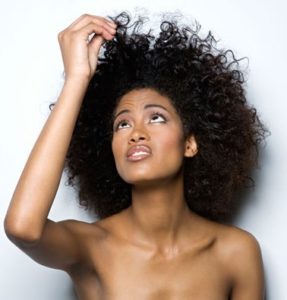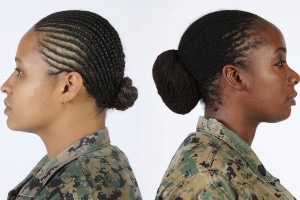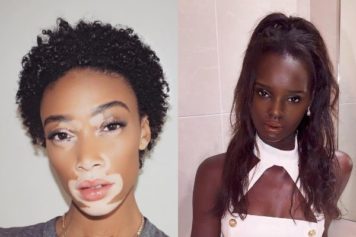Let’s face it, the way our skin and hair looks is important to us. When your hair looks good or your skin glows, you feel good, too. Healthy hair is a visual symbol of overall good health.
Relaxed, natural, weaved, or loose, we all want great hair days. But there are a lot of myths and misconceptions about how to care for African-American hair textures. Is your hair-grooming routine also affecting your health?
What’s The Difference?
The hair texture of African-Americans varies just as much as other ethnic groups. Some have fine strands while others have coarse. Our hair comes in different colors and curl patterns. But there are some unique characteristics that separate us from the rest. Our hair contains less water, leaving it prone to dryness and it breaks more easily than other hair textures.
It Starts With a Clean Slate
Our hair should be shampooed at least every 14 days, but between seven to 10 days is recommended. While people with straight hair wash their hair daily to remove excess oils, African-American hair types are unusually dry. But we can combat stripping oils from the hair by using a moisturizing shampoo and conditioner.
It’s important to keep in mind that bacteria and fungus can grow on the scalp, and that can become a health issue. The scalp and hair should be cleansed regularly to avoid bacteria growth and remove product build-up from hairspray, gels, and other chemicals that can clog the pores.
Strength
Breakage is another common complaint about Black hair. The hair strands bend or spiral, and this prevents oils from the scalp from reaching the ends and moisturizing them. So everyday manipulations – combing, curling, brushing – may damage the hair. Some styling tools, blow-dryers, curling and flat irons, are also harmful as heat sucks additional moisture from the strands.
You can try to minimize the effects of breakage by applying a moisturizing product to the hair, but it may take some time to find the right one because you do not want hair to feel too heavy or greasy. You can also try to cut back manipulations to the hair, including heat styling. When you do have to style with heat, use a product that contains silicone. Look for products that describe the texture of your hair, not the color of your skin.
There is a difference between shedding and breakage.
Shedding is a natural occurrence during which the hair at the end of its life cycle will simply fall out and a new hair will grow in its place and start the cycle over again. It is normal to lose about 100 strands a day. Sometimes you will shed more if you experienced life changes such as massive weight-loss, illness, pregnancy or adjustment medication dose.
Hair loss occurs when it stops growing and maybe caused by a number of health concerns. Some metabolic conditions such as diabetes can cause hair loss. Medication or treatments such as chemotherapy could also be responsible.
Excessive shedding and hair loss could be indicators that there is a medical problem, and you should visit a dermatologist for further information.
Some hair loss is caused by behavior. Tight pony tails or braids can pull the hair from the scalp. In the African-American community where braiding and weaving are common, the pulling of the hair to braid it and the heaviness of the weaves can put too much tension on the scalp. The resulting hair loss is called traction alopecia. It is most commonly noticed around the edges of the hairline and can progress further. Some celebrities who have worn weaves and hair pieces for years suffer from traction alopecia including supermodel Naomi Campbell and Paris Hilton.
Good hair is healthy hair, whether it’s straight, curly, kinky, short, long, natural or processed. Good hair radiates in the light, is soft but yet strong to the touch. It expands when it’s pulled, but snaps back to place. Good hair proclaims to the world that you are a proud and beautiful person.
So take care of your hair and it will love you back.
S.C. Rhyne is a blogger and novelist in New York City. Follow the author on twitter @ReporterandGirl or facebook- TheReporterandTheGirl. www.SCRhyne.com



